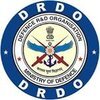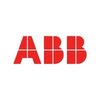
i
Moog Controls
Filter interviews by
Moog Controls Design Engineer Interview Questions and Answers
Moog Controls Design Engineer Interview Experiences
1 interview found
I applied via Job Fair and was interviewed before Apr 2022. There were 2 interview rounds.

(4 Questions)
- Q1. All things about the servo motors
- Q2. How servo motor works
- Ans.
A servo motor is a rotary actuator that allows for precise control of angular position, velocity, and acceleration.
Servo motors use feedback control to maintain a desired position or speed
They typically have a DC motor, a gearbox, and a control circuit
The control circuit sends a signal to the motor to adjust its position based on feedback from a sensor
They are commonly used in robotics, CNC machines, and automation sys
- Q3. How to do DFMEA for the motor in production
- Ans.
DFMEA for motor in production involves identifying potential failure modes and their effects on the system.
Identify all potential failure modes of the motor
Determine the severity of each failure mode
Assess the likelihood of each failure mode occurring
Evaluate the detectability of each failure mode
Develop actions to mitigate or eliminate high-risk failure modes
Continuously monitor and update the DFMEA throughout product...
- Q4. How to do Ansys for the different type of servo motors
- Ans.
Analyze servo motors in Ansys using appropriate simulation techniques
Identify the type of servo motor and its specifications
Create a 3D model of the motor in Ansys
Apply appropriate boundary conditions and loads
Run simulations to analyze the motor's performance
Evaluate results and make necessary design changes
Repeat simulations until desired performance is achieved
Interview Preparation Tips
Top trending discussions






Interview questions from similar companies

I applied via campus placement at Indian Institute of Technology (IIT), Kanpur and was interviewed in May 2024. There were 2 interview rounds.
1 hr and various apti topics
(2 Questions)
- Q1. What are your strengths
- Q2. How do gas turbine engines work
- Ans.
Gas turbine engines work by compressing air, mixing it with fuel, igniting the mixture, and using the hot exhaust gases to spin a turbine.
Air is drawn into the engine and compressed by a compressor
Fuel is injected and mixed with the compressed air
The mixture is ignited, causing a rapid expansion of gases
The hot exhaust gases are used to spin a turbine, which drives the compressor and generates thrust
Examples: Jet engin

Design Engineer Interview Questions & Answers
Indian Space Research Organisationposted on 1 Mar 2024
I applied via Recruitment Consulltant and was interviewed in Feb 2024. There was 1 interview round.
(5 Questions)
- Q1. Why the brittle material fail as spiral fracture surface under torsion
- Ans.
Brittle materials fail as spiral fracture surface under torsion due to their inability to deform plastically.
Brittle materials lack ductility and are unable to deform plastically under stress
Under torsion, the material experiences shear stress which leads to the formation of spiral fracture surfaces
The lack of plastic deformation causes the material to fail catastrophically along these spiral paths
Examples of brittle m...
- Q2. What is entropy
- Ans.
Entropy is a measure of disorder or randomness in a system.
Entropy is a thermodynamic property that quantifies the amount of energy in a physical system that is not available to do work.
It is a measure of the number of possible arrangements of particles in a system.
Entropy tends to increase in isolated systems over time, leading to a state of maximum disorder or equilibrium.
An example of entropy is the melting of ice -...
- Q3. How to find natural frequency practically
- Ans.
Natural frequency can be found practically by conducting modal analysis or using specialized equipment like accelerometers.
Conduct modal analysis by applying a force or impulse to the structure and measuring the resulting vibrations.
Use specialized equipment like accelerometers to measure the vibrations of the structure.
Calculate the natural frequency using the formula: f = 1 / (2π√(k/m)), where f is the natural freque...
- Q4. What is Fast Fourier transform
- Ans.
Fast Fourier Transform (FFT) is an algorithm used to compute the Discrete Fourier Transform (DFT) of a sequence or signal.
FFT is used to analyze the frequency content of a signal by decomposing it into its constituent frequencies.
It is commonly used in signal processing, image processing, audio analysis, and many other fields.
FFT algorithms are much faster than the naive DFT computation, making it practical for real-ti...
- Q5. How FFT is different from DFT
- Ans.
FFT is a faster algorithm for calculating DFT
FFT is faster than DFT in terms of computation time
FFT uses a divide-and-conquer approach to reduce the number of operations
DFT computes all frequencies while FFT only computes the frequencies of interest
FFT is commonly used in signal processing applications
Skills evaluated in this interview

I applied via Naukri.com and was interviewed in Mar 2024. There was 1 interview round.
(2 Questions)
- Q1. What is the sheet metal process
- Ans.
Sheet metal process involves cutting, bending, and assembling metal sheets to create various products.
Cutting: Using tools like shears, lasers, or plasma cutters to cut the metal sheets into desired shapes
Bending: Utilizing press brakes to bend the metal sheets at specific angles
Assembling: Joining the bent and cut metal sheets together using techniques like welding or fasteners
Finishing: Applying coatings or finishes ...
- Q2. Types of Tolerances and explanation
- Ans.
Types of tolerances include bilateral, unilateral, limit, and fit tolerances.
Bilateral tolerance: Allows for variation in both directions from the nominal dimension.
Unilateral tolerance: Allows for variation in only one direction from the nominal dimension.
Limit tolerance: Specifies the maximum and minimum acceptable limits for a dimension.
Fit tolerance: Determines the acceptable range of tightness or looseness between
Interview Preparation Tips
Skills evaluated in this interview

(2 Questions)
- Q1. Define the factor of safety?
- Ans.
Factor of safety is a design parameter that accounts for uncertainties in material properties and loading conditions.
Factor of safety is the ratio of the maximum stress a material can withstand to the maximum stress it is subjected to in a given application.
It ensures that the structure or component will not fail under normal operating conditions.
Higher factor of safety values indicate a more conservative design approa...
- Q2. What is tolerance?
- Ans.
Tolerance refers to the allowable variation in dimensions or properties of a part or product.
Tolerance is important in engineering to ensure proper fit and function of components.
It is typically specified as a range of acceptable values, such as +/- 0.1mm.
Tolerance can be applied to dimensions, material properties, surface finish, etc.
For example, a hole may have a tolerance of +/- 0.05mm to allow for proper alignment

Design Engineer Interview Questions & Answers
Defence Research & Development Organisationposted on 18 May 2024
(1 Question)
- Q1. GD and T Tolerance

Design Engineer Interview Questions & Answers
Alpha Design Technologiesposted on 15 Mar 2024
(1 Question)
- Q1. Basics, verilog, vhdl, design

Design Engineer Interview Questions & Answers
Honeywell Technology Solutionsposted on 29 Mar 2023
I applied via campus placement at Vellore Institute of Technology (VIT) and was interviewed before Mar 2022. There were 3 interview rounds.

(1 Question)
- Q1. Academic knowledge, enthusiasm
(1 Question)
- Q1. Personality, lesrnjng appetite
Interview Preparation Tips

I applied via campus placement at Indian Institute of Technology (IIT), Chennai
Interview Preparation Tips
Experience: Had equal weightage between basic mechanical engineering concepts and industry updates
Tips: Recap fundamenals and general awareness abt technology in manufacturing
Duration: 60 minutes
Round: Technical Interview
Experience: Very generic qns. regarding your previous projects, difficulties experienced in them.
Tips: Be confident about the projects and your contibutions in them. Establish that you are hardcore mechanical engineer enthusiast and not looking for a resume highlight.
Round: HR Interview
Experience: Very informal. Didnt have any tricky qns.
Tips: Highlight your enthusiasm in whatever you do in life. Be positive and friendly with the panelists
General Tips: Develop your mechanical engineering enthusiasm in general will seal the deal.
Skills:
Duration: 2
College Name: IIT Madras
Motivation: One of the few companies in India actually doing R&D

(2 Questions)
- Q1. Tableau components and uses
- Ans.
Tableau is a data visualization tool used for creating interactive and shareable dashboards.
Tableau components include Tableau Desktop, Tableau Server, and Tableau Online.
Tableau is used for data analysis, data visualization, and creating interactive dashboards.
Tableau can connect to various data sources such as Excel, SQL databases, and cloud services.
Tableau allows users to create visualizations like bar charts, line...
- Q2. Sql joins and with use cases
Skills evaluated in this interview
Moog Controls Interview FAQs
Tell us how to improve this page.
Moog Controls Interviews By Designations
Interview Questions for Popular Designations
- Senior Design Engineer Interview Questions
- Mechanical Engg. Design Interview Questions
- Electrical Design Engineer Interview Questions
- Structural Design Engineer Interview Questions
- Junior Design Engineer Interview Questions
- Hardware Design Engineer Interview Questions
- Piping Designer Interview Questions
- Trainee Design Engineer Interview Questions
- Show more
Design Engineer Interview Questions from Similar Companies
Moog Controls Design Engineer Reviews and Ratings
based on 2 reviews
Rating in categories
|
Design Engineer
8
salaries
| ₹3.3 L/yr - ₹5 L/yr |
|
Assistant Manager
6
salaries
| ₹10.2 L/yr - ₹20 L/yr |
|
Senior Engineer
6
salaries
| ₹7.5 L/yr - ₹12.6 L/yr |
|
Mechanical Engg. Design
6
salaries
| ₹3.5 L/yr - ₹4.5 L/yr |
|
Executive Accountant
6
salaries
| ₹3 L/yr - ₹3.9 L/yr |

Bosch Rexroth India

Schneider Electric

Siemens

ABB
Calculate your in-hand salary
- Home >
- Interviews >
- Moog Controls Interview Questions >
- Moog Controls Design Engineer Interview Questions


